
Remember how last summer the nosy neighbors were always out in their yard, peering at you, your family and your friends? At times, you can feel like you’re onstage performing.
If you want to avoid a repeat performance this summer, it’s not a moment too soon. Here are a nice handful of affordable ways that you can create or enhance privacy anywhere around your home’s exterior without building an expensive fence or wall.
Read on to find inspiration for your summer of privacy.
1. Bamboo screening
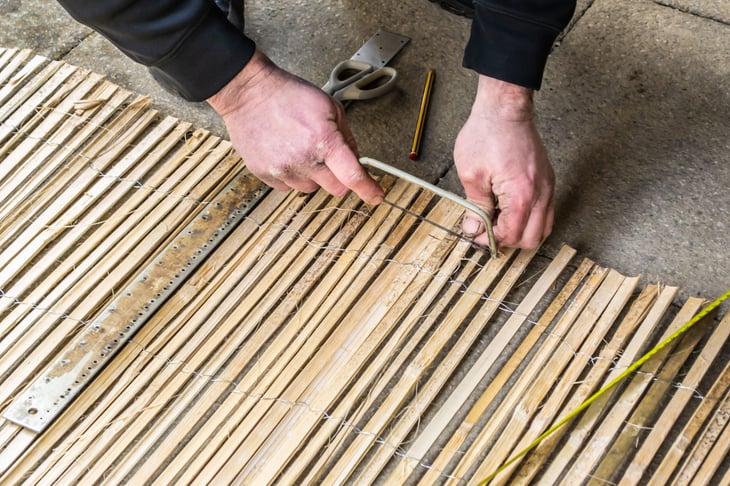
A quick, easy and relatively inexpensive privacy solution — and a great one for DIYers –is to install rolled bamboo screening onto a separately purchased frame.
Maybe you’ve been considering installing individual bamboo poles and attaching them to a frame. But did you know that you can find rolls of screening consisting of bamboo poles that already are wired together? Hunker explains in detail how to do this project. Depending on the height and where you live, you may need to secure a permit.
A 6-by-8-foot roll of black bamboo garden screening from The Home Depot can be installed in a frame made of metal or wood, purchased separately.
Tip: Look for outdoor or exterior bamboo screening. Avoid the less sturdy bamboo screens or blinds meant for use inside the home.
2. Vines on a lattice
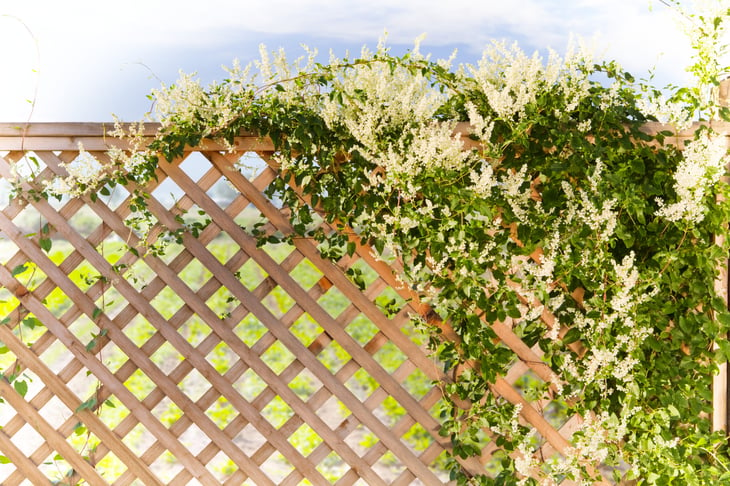
This solution’s not just effective, it also can be really beautiful.
The basic idea is this: Install a lattice — a support structure made of crossed strips of wood or metal — to hold the weight of a climbing vine that blocks neighbors’ view into your space.
Choose a rapidly growing plant. And, for a two-fer, use one that produces seasonal flowers. That way, as Dave’s Garden puts it, “you’ll be treated to a wall of color all season long.”
A few suggestions on plant choice:
- Find a climbing plant that’s a perennial (lives on from year to year) and is suited to your climate.
- If you want coverage year-round, select an evergreen plant that doesn’t drop its leaves in the fall.
- Avoid invasive plants. Containing them can be a headache.
- Learn how long it’ll take a plant to grow big enough to offer privacy. (Perhaps plant a great annual vine in the spot meanwhile).
Dave’s Garden has a list of suggested plants.
3. Privacy grasses
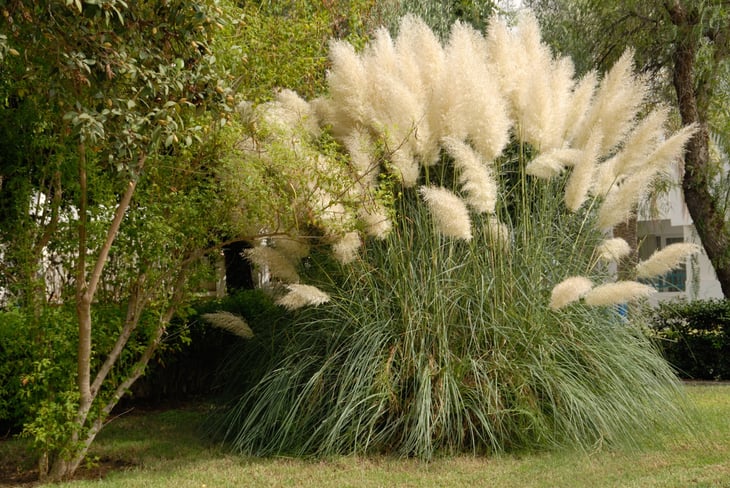
Consider planting a tall ornamental grass and siting it strategically for privacy. Good grasses for this purpose include:
- Giant pampas grass (8 to 12 feet at maturity)
- Switchgrass (up to 6 feet tall)
- Feather reed grass (3 to 6 feet)
- Zebra grass (5 to 7 feet)
- Big bluestem grass (5 to 7 feet)
- Chinese silver grass (up to 10 feet tall)
- Ravenna grass (also known as hardy pampas grass, it grows to 12 feet)
- Umbrella bamboo (10 to 12 feet)
4. Weather-resistant/waterproof curtains
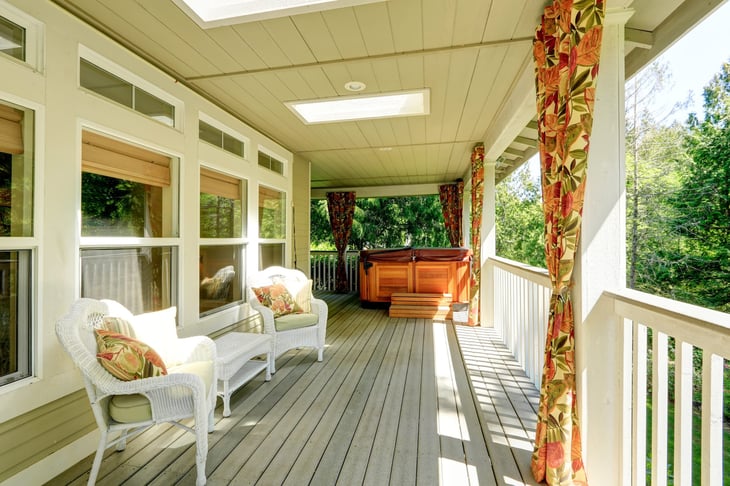
By curtaining off an outdoor area, you can create a pleasant outdoor room for entertaining and just relaxing. Choose weather-resistant, mildew-proof curtains in a damp climate and fabrics with UV protection in sunny regions. String some twinkle lights for atmosphere.
Especially if you have a rental home, it’s good to hang curtain rods without drilling or damaging walls and woodwork. Kwik-hang, for example, sells no-drill curtain rod brackets and has instructions for hanging outdoor curtains.
5. A secret garden
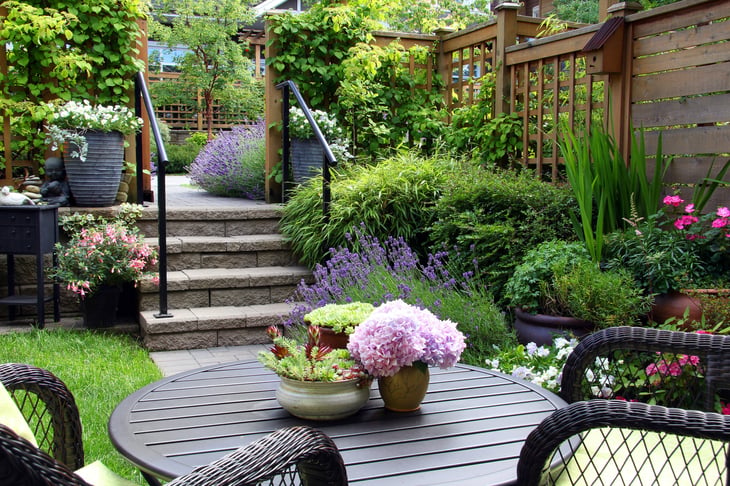
I’ve seen friends create a small, concealed private garden just steps from the street in front of their home.
They picked a corner of the lot with a tall, mature lilac bush that became one “wall.” A side-yard gate and fence became another wall.
On the third side, where a garden bed rises a few feet up to the street, they dug out a small “room” and edged it with a low, short wall of concrete bricks and laid a small patio of cement pavers.
Along the street they added trees and shrubs to complete the barrier.
Now they’ve got a comfortable, beautiful, private spot for relaxing and entertaining. It took only four years for the trees, flowers and plants to grow high and wide enough to shield the garden room from passers-by.
6. An overgrown garden
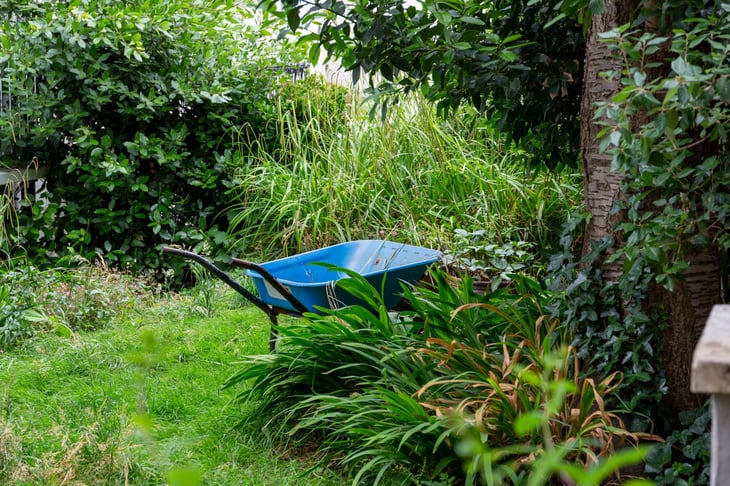
Left to grow tall and wide, trees and shrubs can become an effective privacy barrier. What’s more, the right plantings muffle noise from busy streets.
Instead of pruning, cutting back and sculpting, let existing shrubs and trees in your garden grow unimpeded so that they fill spaces and reach for the sky where you want to protect your privacy.
Install more plants where there are gaps. Consult with experts at a local nursery to find plants that enhance privacy and flourish in your garden.
7. Garden structures
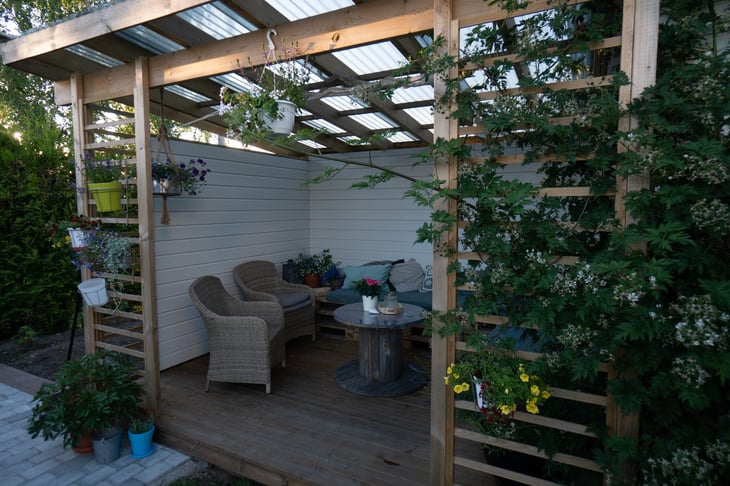
Enclosing a freestanding structure like a pergola, gazebo or shed is a fine way to surround yourself with outdoors beauty while enjoying new privacy. Better Homes and Gardens has a range of ways to use a pergola.
Even a vine-covered trellis can be a private outdoor room if its open sides are pointed away from neighbors’ yards and windows.
Or, screen a trellis interior from looky-loos by hanging curtains at the open side that faces neighbors.
8. A privacy hedge

A hedge is a perfect privacy barrier.
But, rather than simply letting existing plants overgrow, creating a hedge takes planning and preparation.
Choose species of bushes well-suited to this job. Measure the site to be sure you can accommodate your vision. Learn to train and trim your plants into the shape you need.
Hedge-growing is for patient gardeners. It may take many years for a hedge to be tall and full enough to do its job. The Arbor Day Foundation has a step-by-step guide for creating a privacy hedge.
9. A privacy screen
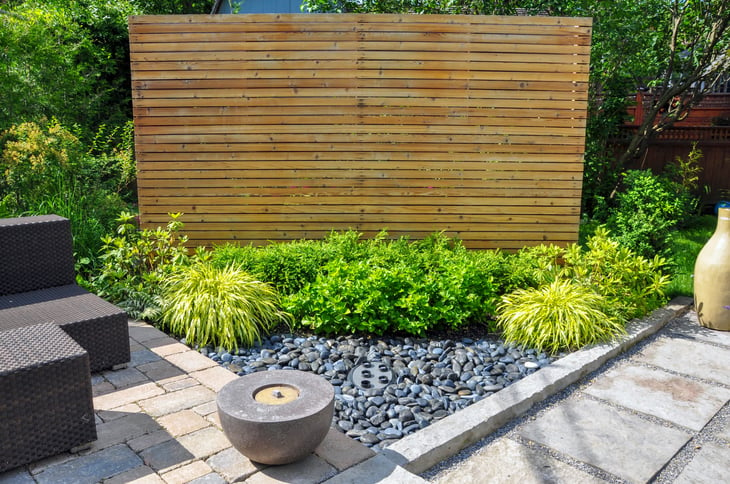
Unlike a fence, a screen needs only to shield a portion of your yard from view. Screens are an effective way to quickly erect a privacy barrier. Build one in your garden or purchase and erect a ready-made screen for a strategic spot.
Another approach is to install a privacy screen.
The spring-loaded screen is rolled up inside a protective housing when it’s not in use and pulled across an area to make a privacy barrier. To engage a manually operated screen, grasp the screen’s handle, pull the screen across the opening and attach it to a latch.





Add a Comment
Our Policy: We welcome relevant and respectful comments in order to foster healthy and informative discussions. All other comments may be removed. Comments with links are automatically held for moderation.